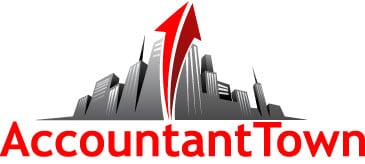Accounting Principles – Preparing a Balance Sheet
Preparation of the balance sheet — Having completed the profit and loss account, and having appropriated or allocated the profit, we must prepare a balance sheet or a financial statement. This statement not only shows the financial condition of the concern but also verifies the result given in the profit and loss account.
As already stated, the balance sheet may be arranged to show fixed assets first, and then the current or floating assets; or current assets may be shown first, and then the fixed assets. The latter method is the one adopted in this balance sheet. The author believes that this should be the method always followed because the balance sheet, strictly speaking, is nothing else than a financial statement and as such should show the financial condition. The former method of placing fixed assets first, may be adopted where it is desirable to show the strength of the company in assets available for earning revenue. As will be noticed, the notes and accounts receivable are added together, both representing outstanding amounts due the firm, and the other two items on the asset side are added to them to show the current assets; the second group totaled represents the fixed assets; the third group, advanced or deferred assets. It will be noticed that the two items last mentioned—unexpired insurance and unconsumed advertising—were deducted in the profit and loss account for the reason that they were advances made during’ the current period to be utilized at a future time, and hence were properly listed among the assets at the time the statements were prepared.
On the liability side we have the notes and accounts payable added together, showing the amount due by us to the trade. In addition, we have accrued salaries, forming a deferred liability created during this period, which is accrued but not as yet due. The final part of the balance sheet shows the proprietorship. As the problem does not call for separate partners’ accounts, it is advisable to show the proprietorship in detail, accounting for the present capital. We therefore begin with Jones’s balance on the first of January, adding to it the 5/8 of the profits and deducting his withdrawals, showing his present capital to be $72,411.46. We do the same thing with Smith’s account, determining his capital to be $47,986.87, making the combined capital of the business $120,398.33. This makes the liability side equal to the asset side, and, therefore, verifies the result shown in the profit and loss account. j 26. “Closing” entries.—We have already learned something about the preparation of a business, as well as of a financial statement. It will be recalled that we used this problem only preparatory to taking up the closing of the accounts of the January and February transactions given in the former chapter. By closing entries we mean classifying, in the form of a journal entry, all nominal accounts which, when posted to their respective accounts, will be closed out, leaving open on the ledger only such accounts as show an asset, a liability, or proprietorship.
In preparing a profit and loss account we were able to deduct certain items from others in order to show the results. We cannot do this by means of journal entries. In order to show deductions, reversed entries must be made.
In analyzing the closing entries we see that the trading account has been charged with $22,417.04, comprising the cost of the purchases, as well as the necessary expenses in bringing the goods to market and disposing of them. In the closing entries we cannot very well show the profit and loss made on each kind of goods. It is also important to include such items as freight inward, because this increases the cost of the goods. The items of advertising, freight outward, and commission are included, as they represent the selling expense incurred in marketing the product.
The second entry closes first of all the discount gained account, as this is an offset to the debit of the trading. It also opens separate accounts for the inventories of the balance on hand at the end of the period. As our trading account has been charged for total purchases without regard to the sale of the goods, it is necessary to credit this account for inventories, in order to show cost of goods sold. These inventories are asset and not nominal accounts.
As we charged the trading account for the cost of the goods, we credit it with the sales. We transfer the subdivided sales accounts by debiting each account and crediting the trading. That closes the sales accounts and shows the returns against the goods in the trading account.
/ We then close the discount loss account into trading, as this decreases the sales. Subtracting the debit side of the trading account from the credit side, we find the difference to be $3,689.62, which we transfer to the profit and loss account, thus closing entirely the trading account. The trading account has now fulfilled its function, showing the profit realized on trade, exclusive of administration expenses.
The profit and loss account is then debited for all items of administration expenses. By means of this entry, all nominal accounts showing administration expenses are closed.
As cash discount gained is additional income it is closed into the profit and loss account.
Deducting the debit side of the profit and loss account (which also includes the item of $332.41 for bad debts) we find the net profit to be $2,467.11, which is closed by transferring it to the proprietor’s drawing account.
As has already been said, we keep the drawing account separate from the capital account in order to show the capital investment intact. We do not want to disturb this account until the end of the fiscal period, when it is adjusted by transferring to it any remaining balance in the drawing account. Our next entry, then, is to debit the drawing account for the balance of $2,017.11, after deducting the withdrawals from the profits, and to credit the capital account for this amount. This closes all nominal accounts, leaving on the books of the concern only such accounts as show assets, liabilities or proprietorship.
On pages 77-85 are given the ledger accounts after having posted the closing entries. Instead of repeating the items appearing in the accounts in detail, the totals only are given. As the purpose of repeating the ledger accounts is to show them when closed, there is no necessity for including details.
Access the contact form and send us your feedback, questions, etc. We are always welcome to help someone out. You can also contact us if you wish to submit your writing, cartoons, jokes, etc. and we will consider posting them to share with the world! The Facebook and LinkedIn groups are also good areas to find people interested in accounting like yourself, don’t hesitate to join as everyone of all levels are welcome to become part of the community.

